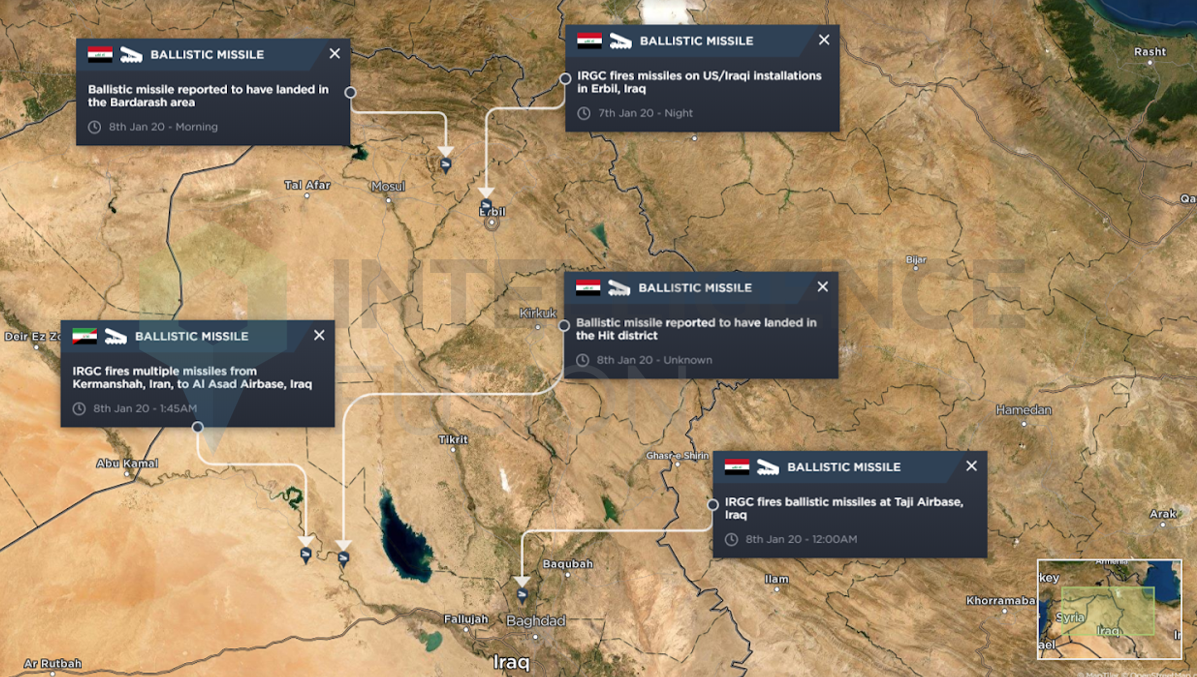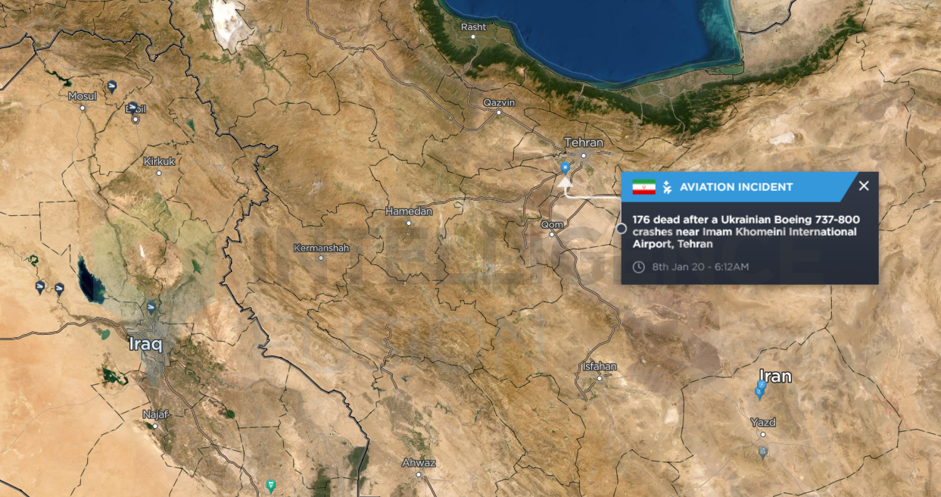Iran’s Retaliation for Soleimani’s Assassination: Missile Attacks on US Bases in Iraq
Date of Report: 12:36hrs GMT, 08 January 2020
Date/Time of Incident: 01:45-02:45hrs Arabia Standard Time (GMT +3hrs), 08 January 2020
Between 01:45-02:45 hours Arabia Standard Time (GMT +3hrs) on the 8th January 2020, multiple ballistic missile attacks occurred at two installations in Iraq; Erbil International Airport, and the Ain Al Asad Airbase west of Baghdad.

Reports from the time of the attacks have also claimed that projectiles were fired at the Taji Airbase north of Baghdad. It’s not clear if the projectiles were ballistic missiles or smaller rockets. Reporting indicates at least 15 missiles were fired on the Al Asad and Erbil installations; although the Iranian government has claimed to have fired up to 22 missiles. As of the time of this report, no US or Iraqi casualties have been reported.
Iran has taken responsibility for the attack; stating its Islamic Revolutionary Guard Corps’ Aerospace Force (IRGC-AF) attacked the bases in retaliation for the US Drone strike on the 4th January 2020 which killed General Qassem Soleimani, the Commander of the IRGC’s Quds Force.
Multiple reports have shown the Iranian government and Supreme Leader Ayatollah Khameini are claiming to have caused mass casualties (ranging between 30-80 US/Iraqi military personnel.)
An immediate effect which has been noticed in the region has been the cancellations/delays by multiple airlines flying in/out of Iran. However, it’s worth noting another potential cause for this is the recent incident of a Ukranian Boeing 737-800 crashing near Tehran’s Imam Khomeini International Airport.

COMMENT. No mentions of casualties or battle damage assessments (BDA) have been released by US President Donald Trump or relevant US Government Agencies at the time of this report. Further reporting has begun to indicate Iran will ‘unleash Hezbollah’ should the US retaliate. An idea of casualties from these attacks would serve as an indicator of any type and severity of further action.
It’s also worth noting that since the invasions of Afghanistan (2001) and Iraq (2003), the United States military has developed capabilities to provide early warning for Indirect Fire Attacks on its installations, referred to as Counter Rockets, Artillery and Mortars (C-RAM). COMMENT ENDS.
Assessment
At this time, it’s likely that any future actions by either side will depend largely on any confirmed American/Iraqi casualties from subsequent BDA. Given the C-RAM technology which has been developed over the years, it’s likely the missile attacks conducted by the IRGC-AF have caused minimal casualties, possibly none. For the time being, the effect of these incidents will likely be towards the aviation sector; flights in/out of Iran and Iraq will possibly be subject to delays or cancellations.
Shortly after we identified the first report of Soleimani’s assassination, Intelligence Fusion’s CEO and Senior Regional Analyst for the Middle East sat down to discuss the attack. They analysed the attack details, the timeline leading up to escalation and the impact of the incident from an international and local perspective.
If you missed the podcast, you can catch up below:
